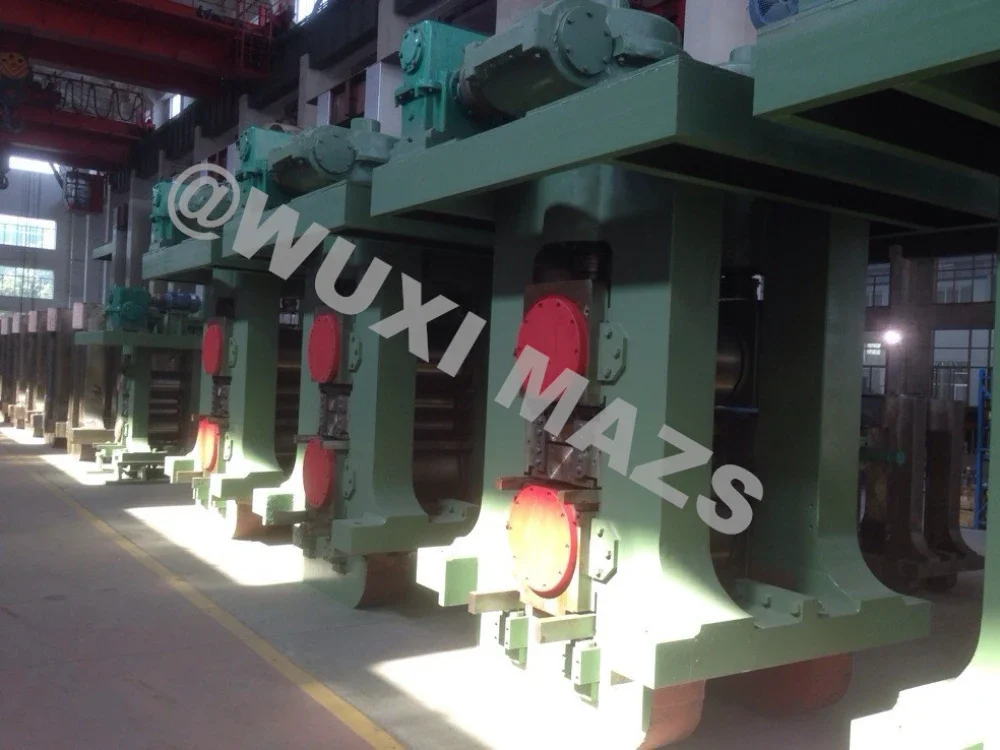Four High Rolling Mills: Key to Precision and Efficiency in Metal Processing
4 min readRolling mills have long been a cornerstone of metalworking, providing essential services in the shaping and refining of metal into sheets, plates, and other forms used in various industries. Among the most popular types of rolling mills is the four high rolling mill, a crucial piece of equipment widely used in metal processing. This article Mazs delves into the structure and design of four high rolling mills, emphasizing their importance in the modern metal processing landscape.
What are Four High Rolling Mills?

A four high rolling mill consists of four rollers – two smaller working rolls and two larger backup rolls – arranged in a vertical alignment. These mills are primarily used for rolling thin sheets and plates, where precision and smooth surface quality are required. The unique arrangement of rolls helps to manage the material efficiently, providing greater control over the thickness and quality of the final product.
The four high rolling mill design provides the necessary flexibility to handle both high-speed processes and various types of materials. In applications such as steel and aluminum production, the four high rolling mill setup reduces the amount of material deformation that can occur in other mill designs, offering a more precise, consistent outcome. In addition to their precision, four high rolling mills can process a wide range of materials, contributing to their widespread use in many industries.
Four high rolling mills are commonly employed in industries such as steel production, aluminum rolling, and other non-ferrous metal industries. Their design ensures the effective handling of materials by minimizing the deflection of the working rolls under the applied force, resulting in higher accuracy and productivity.
Structure and Design of Four High Rolling Mills
The design of four high rolling mills is both robust and sophisticated. These mills consist of two main components – the upper and lower stands – which house the rollers that perform the actual rolling operation. The working rolls are positioned between the backup rolls, and they are the primary point of contact with the metal.
Working Rolls
The working rolls of four high rolling mills are smaller in diameter compared to the backup rolls and are the rollers that come into direct contact with the metal. The working rolls are subjected to mechanical stresses and wear during the rolling process, and their precise control is vital to achieving the desired thickness and surface finish. These rolls are typically made of high-quality materials that can withstand high pressures and temperatures. Materials like high-strength steel or alloyed steel are often used for their excellent wear resistance and ability to perform under extreme conditions. The working rolls are essential for determining the final thickness of the rolled material. The ability to make fine adjustments to the working rolls ensures that even small changes in thickness can be achieved. In cases where metal needs to be rolled to precise specifications for applications such as electronics, automotive, or aerospace, working rolls allow operators to maintain strict tolerances.
Backup Rolls
The backup rolls of four high rolling mills are larger in diameter and serve a critical role in supporting the working rolls. They help to reduce the bending of the working rolls under the applied forces, which could otherwise lead to a non-uniform thickness in the rolled material. The backup rolls also assist in distributing the applied forces evenly across the working rolls, contributing to the durability and performance of the rolling mill. The backup rolls bear much of the load, allowing the working rolls to focus on performing the deformation process without warping or excessive deflection. The material used for backup rolls is generally more durable and robust to handle the high forces involved. For instance, high-quality steel and specialized alloys are used for backup rolls to ensure they can endure the mechanical stresses and temperatures over long periods.
Roll Gap Adjustment Mechanism
The roll gap in a four high rolling mill is adjustable, allowing operators to control the thickness of the material being rolled. This is a critical feature for producing metal sheets and plates of varying thicknesses. The roll gap can be adjusted manually or through automated systems to ensure precision in the rolling process. The automatic adjustment of the roll gap allows for high levels of productivity without sacrificing quality. The control systems that adjust the gap are designed to respond to various parameters such as material properties, desired thickness, and rolling speed. This automatic process reduces operator error, minimizes downtime, and improves consistency across the batch.
Four high rolling mills are a vital component in the metal processing industry, providing precise control over the rolling of thin sheets and plates. Their robust design, high throughput, and ability to handle a variety of metals make them indispensable in industries such as steel, aluminum, and non-ferrous metal production. Through proper maintenance and optimization, these mills can continue to deliver high-quality products with exceptional precision and efficiency. As industries continue to demand higher productivity and better quality, four high rolling mills will remain at the forefront of metalworking technology.
https://www.mazsmachine.com/Cold-Rolling-Mill
www.mazsmachine.com
WUXI MAZS MACHINERY GROUP